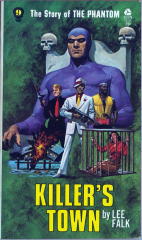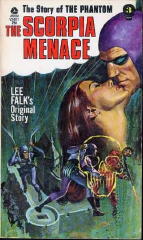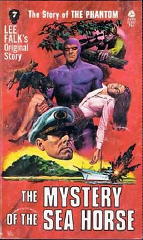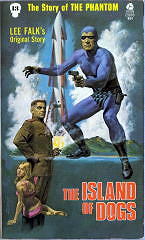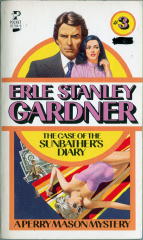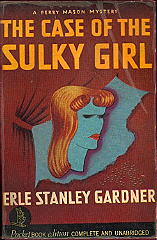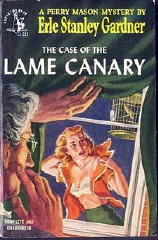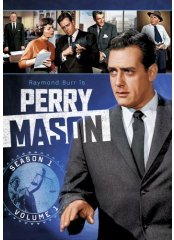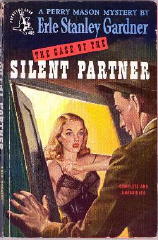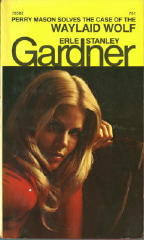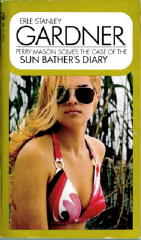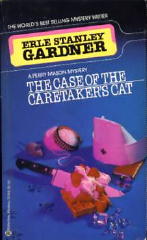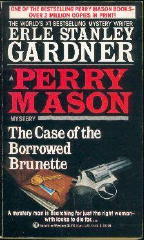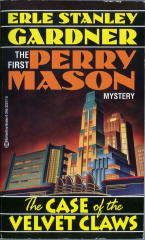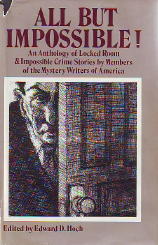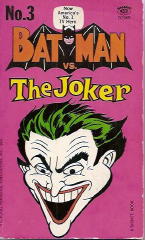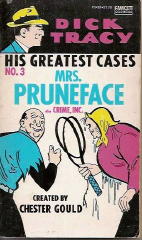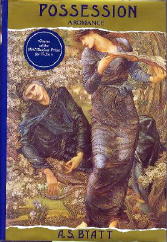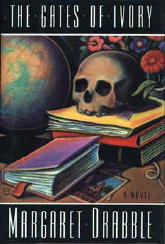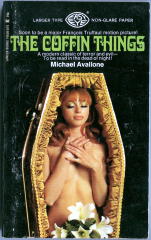Tue 2 Oct 2007
The Compleat DENNY MARTIN FLINN (1947-2007).
Posted by Steve under Authors , Bibliographies, Lists & Checklists , Crime Fiction IV , Obituaries / Deaths Noted1 Comment
The death of Denny Martin Flinn, a rather unique contributor to the realm of detective fiction, does not seem to have been widely noted in the world of mystery fandom. The fact appears in Part 19 of the Addenda of the Revised Crime Fiction IV, which I’m working on now. Otherwise only Jiro Kimura’s Gumshoe Site seems to have mentioned it.
Obituaries have appeared in several entertainment-oriented news sources, however, including Variety and Broadway World. A man of talent in many fields, Mr. Flynn died of complications of cancer on August 24th of this year. He was 59.
Here are his credits in CFIV, by Allen J. Hubin, slightly updated and amended. I’ll get back to the books in a minute.
FLINN, DENNY MARTIN (1947- 2007)
San Francisco Kills (Bantam, 1991, pb) [Spencer Holmes; San Francisco, CA]
Killer Finish (Bantam, 1991, pb) [Spencer Holmes; San Francisco, CA]
But first, here are some of Mr. Flinn’s non-mystery writing accomplishments. For more information on any of these, you may follow the links above.
● He choreographed Charles Strouse’s off-Broadway musical Six and he restaged Sugar for its West Coast premiere.
● As a performer, he appeared in the national companies of Fiddler on the Roof, starring Jan Peerce and Theodore Bikel as well as two-and-a-half years in one of the national tours of A Chorus Line.
● Flinn wrote and directed the musical Groucho, starring Lewis J. Stadlen, which played off-Broadway and toured the country for two years.
● As a writer, his first book was What They Did for Love, the story of the making of the Broadway musical A Chorus Line.
● He co-authored with Nicholas Meyer the screenplay for Star Trek VI: The Undiscovered Country.
THE MYSTERY NOVELS:
San Francisco Kills. Bantam, pb, January 1991.

From the front cover: “He bears the family name and has a talent for detection. Just call him Holmes … Spencer Holmes.”
From the back cover: … If there be any here present who knows just cause why they may not be lawfully be joined in marriage, I require him now make it known …
Following the priest’s request, a shot rang out and the groom fell dead.
What kind of killer was clever enough to get away with murder in front of hundreds of witnesses? That is just the sort of question that appeals to Spencer Holmes, a San Francisco detective who has inherited a fascination for foul play, a talent for deduction, good looks, and hoards of money from his illustrious grandfather, the immortal super sleuth Sherlock Holmes.
In a case as complicated as they come, Spencer Holmes, assisted by his inscrutable companion, Sowhat Dihje, must use his formidable intelligence to follow a faint trail that leads from the mansions of the well-to-do into the not-so-distant past – to ferret out a remakable affair of friendship, love … and murder.
Killer Finish. Bantam, pb, August 1991.

From the front cover: “When it comes to solving crimes, he was born to it. … He’s Spencer Holmes, San Francisco sleuth.”
From the back cover: “It does appear that the Great Gandolfo has suffered an irreversible mistake in an otherwise well-conducted act!”
And in this case, appearances were not deceiving. The Great Gandolfo was run through with his own sword, and it didn’t take a Sherlock Holmes to see that the erstwhile magician had died on stage – literally.
What it did take was Spencer Holmes, Sherlock’s equally talented grandson, who happened to be attending Gandolfo’s final performance. And what the master sleuth, along with his sidekick, Sowhat Dihje, finds upon investigation, is a twisted trail of colorful suspects, grand illusions, missing persons, and voices from the dead. And that is only the beginning. For in the city by the bay, the mixture of magic and murder is potent – so potent that even the most pedigreed of detectives will be astounded by a … KILLER FINISH.
In a short author’s biography on the final page of Killer Finish, it was announced that Mr. Flinn was working on a third novel, one called Lady Killer. For whatever reason, it was never published.
Searching the Internet, it appears that Irene Adler is the lady in question, if you are asking the one I think you are, and on another site it is stated that “Spencer’s mansion in Frisco has a Nero Wolfe Room, which perhaps hints at his parentage, since it has already been well-established that Wolfe is Sherlock Holmes’ son.”
On page 14 of San Francisco Kills, the plaque attached to the door of Holmes’ mansion door reads:
Consulting Detective
2210 Baker Street
which I believe entitles him to be called a Private Detective. One who does not do divorce or “keyhole” work, but one who takes only the cases that intrigue him the most.
One other site briefly describes the books are humorous pastiches. Here, for example, from page 194 of the same book cited above, is the following passage. Spencer Holmes is speaking to a fellow who has just finished a game of tennis:
“Fine. And yours?”
“Afoot.”
“I don’t think I understand.”
“I’m sorry. It is a colloquial expression. Before your time, I think.”
“Ah.”


